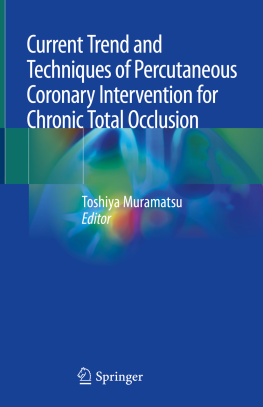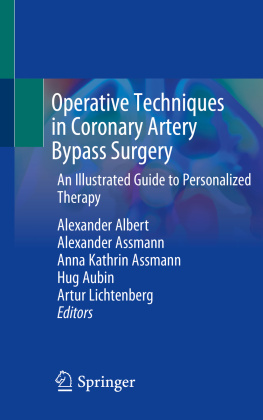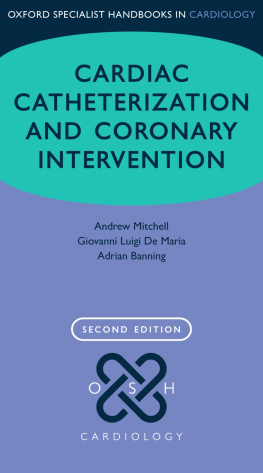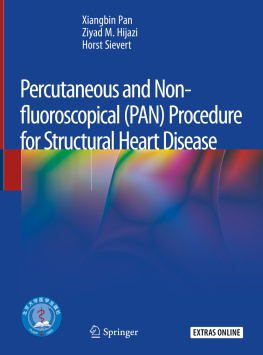Toshiya Muramatsu - Current Trend and Techniques of Percutaneous Coronary Intervention for Chronic Total Occlusion
Here you can read online Toshiya Muramatsu - Current Trend and Techniques of Percutaneous Coronary Intervention for Chronic Total Occlusion full text of the book (entire story) in english for free. Download pdf and epub, get meaning, cover and reviews about this ebook. year: 2020, publisher: Springer Singapore, genre: Home and family. Description of the work, (preface) as well as reviews are available. Best literature library LitArk.com created for fans of good reading and offers a wide selection of genres:
Romance novel
Science fiction
Adventure
Detective
Science
History
Home and family
Prose
Art
Politics
Computer
Non-fiction
Religion
Business
Children
Humor
Choose a favorite category and find really read worthwhile books. Enjoy immersion in the world of imagination, feel the emotions of the characters or learn something new for yourself, make an fascinating discovery.
- Book:Current Trend and Techniques of Percutaneous Coronary Intervention for Chronic Total Occlusion
- Author:
- Publisher:Springer Singapore
- Genre:
- Year:2020
- Rating:3 / 5
- Favourites:Add to favourites
- Your mark:
- 60
- 1
- 2
- 3
- 4
- 5
Current Trend and Techniques of Percutaneous Coronary Intervention for Chronic Total Occlusion: summary, description and annotation
We offer to read an annotation, description, summary or preface (depends on what the author of the book "Current Trend and Techniques of Percutaneous Coronary Intervention for Chronic Total Occlusion" wrote himself). If you haven't found the necessary information about the book — write in the comments, we will try to find it.
Toshiya Muramatsu: author's other books
Who wrote Current Trend and Techniques of Percutaneous Coronary Intervention for Chronic Total Occlusion? Find out the surname, the name of the author of the book and a list of all author's works by series.
Current Trend and Techniques of Percutaneous Coronary Intervention for Chronic Total Occlusion — read online for free the complete book (whole text) full work
Below is the text of the book, divided by pages. System saving the place of the last page read, allows you to conveniently read the book "Current Trend and Techniques of Percutaneous Coronary Intervention for Chronic Total Occlusion" online for free, without having to search again every time where you left off. Put a bookmark, and you can go to the page where you finished reading at any time.
Font size:
Interval:
Bookmark:
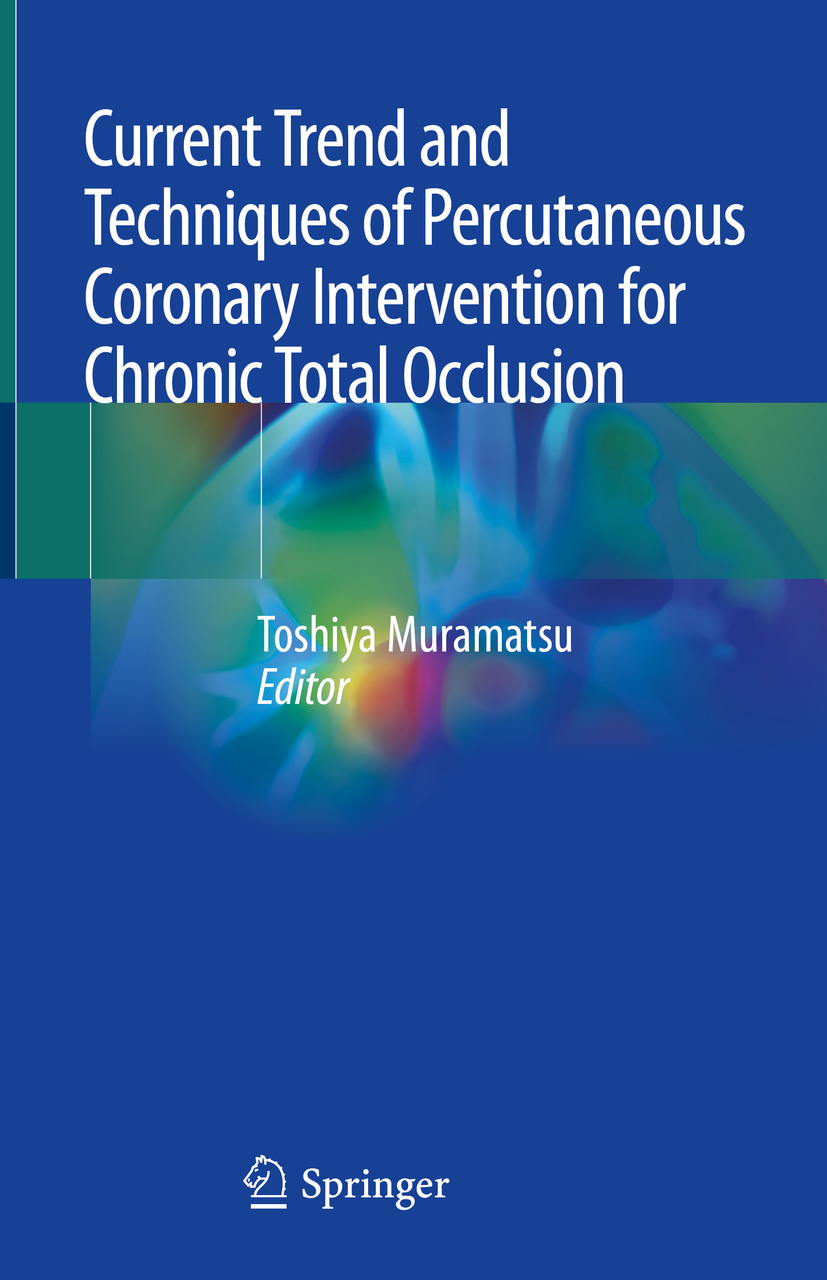

This Springer imprint is published by the registered company Springer Nature Singapore Pte Ltd.
The registered company address is: 152 Beach Road, #21-01/04 Gateway East, Singapore 189721, Singapore
Coronary chronic total occlusion (CTO) has been generally defined as complete occlusion of antegrade coronary flow with estimated occlusion for more than 3 months. It has been observed in approximately one-third of patients referred for cardiac catheterization []. Failed CTO-PCI may be not synonymous with an OMT control group because OMT can avoid inherent complications related to CTO-PCI. Therefore, clinical indications for CTO revascularization, especially focused on CTO-PCI, are very important to drive the decision for an attempt. Here we will briefly review cardiovascular outcomes associated with CTO-PCI, and discuss the current guidelines and appropriate use criteria for CTO-PCI.
Successful CTO-PCI has been associated with numerous cardiovascular benefits, including improvement in left ventricular ejection fraction (LVEF), improved wall motion of the affected segment, and reduction in arrhythmic vulnerability [].
However, it remains undetermined whether CTO-PCI improves left ventricular ejection fraction, risk for arrhythmias, and mortality. Two randomized trials using paired cardiac magnetic resonance imaging, EXPLORE (Evaluating Xience and Left Ventricular Function in PCI on Occlusions After STEMI) and REVASC (Recovery of Left Ventricular Function After Stent Implantation in Chronic Total Occlusion of Coronary Arteries) trial have showed no improvement in LV function []. Therefore, we need large registry or randomized trial suggesting role of implantable cardioverter defibrillator and CTO-PCI.
Compared to failed CTO-CPI, quality-of-life variables have also been shown to improve after successful CTO-PCI, including improvements in angina, heart failure symptoms, physical activity, and overall treatment satisfaction []. Debate on symptom control and quality of life would be clarified by SHINE-CTO trial (SHam-controlled INtErvention to Improve QOL in CTOsSHINE-CTO; NCT02784418).
Most importantly, successful CTO-PCI versus failed CTO-PCI has been associated with a reduction in all-cause mortality in registry data and meta-analysis [].
Although previous 4 random trials did not demonstrate clinical benefits of CTO-PCI in terms of cardiac events, those enrolled relatively less symptomatic, preserved LV function patients and less complex CTO patients (JCTO score ranging 1.672.2, SYNTAX score ranging 1429). Furthermore, the prognosis of CTO patients may differ based on the amount of myocardium at risk that is subtended by the CTO vessel and this should be a subject of investigation. Therefore, clinical trials comparing optimal medical therapy and CTO-PCI versus optimal medical therapy alone are therefore still needed in higher risk patients with more complex CTOs and/or large to medium sized ischemia, but investigators should be cautious because investigators face significant difficulties, including high cost to conduct randomized control trials, unexpected complications, barriers to randomize patients who are highly symptomatic, crossovers, and the relative high PCI failure in complex CTO.
The 2011 ACCF/AHA/SCAI Guideline for Percutaneous Coronary Intervention recommended CTO-PCI in patients with clinical indications and suitable anatomy when performed by operators with appropriate expertise (Class IIa, Level of Evidence [LOE] B) [].
The 2014 European Society of Cardiology and European Association for Cardio-Thoracic Surgery guidelines on myocardial revascularization recommend CTO-PCI to be considered in patients with expected ischemia reduction in a corresponding myocardial territory and/or angina relief (Class IIa, LOE B). They recommend an initial anterograde approach and consideration of a retrograde approach if this fails or a primary retrograde approach in selected patients (Class IIb, LOE C) [].
The ACC/AATS/AHA/ASE/ASNC/SCAI/SCCT/STS 2017 Appropriate Use Criteria for Coronary Revascularization in Patients With Stable Ischemic Heart Disease have eliminated the separate criteria for CTO lesions as was the case in the 2012 guidelines. Currently, indications for revascularization in SIHD are determined irrespective of whether the lesion is a CTO []. The indication for revascularization of a coronary artery lesion, whether CTO or severe stenosis, is based on symptoms, the extent of antianginal medications, and the risk of ischemia.
Previous numerous registries and meta-analysis comparing successful vs. unsuccessful PCI support CTO-PCI for benefit of mortality and cardiac outcomes, which was not demonstrated in randomized trials. Despite discordant quality of life outcomes from DECISION-CTO and EUROCTO trial, symptomatic benefit can be achieved by alleviating ischemia in symptomatic patients (chest pain or dyspnea) after OMT. Therefore, patients who have symptoms of ischemia despite optimal medical therapy with viable myocardium are likely to gain the most benefit from CTO-PCI. The procedural benefit will likely be proportional to symptoms severity. Therefore, informed discussions with patients and providers emphasizing the risk and benefits associated with CTO-PCI for a given patients condition are the keys to providing patients with appropriate CTO-PCI. From technical point of view, CTO-PCI continued to evolve and achieve maturation of non-occlusive coronary artery disease PCI. Therefore, the CTO-PCI deserves and should be reserved for proper indication.
Font size:
Interval:
Bookmark:
Similar books «Current Trend and Techniques of Percutaneous Coronary Intervention for Chronic Total Occlusion»
Look at similar books to Current Trend and Techniques of Percutaneous Coronary Intervention for Chronic Total Occlusion. We have selected literature similar in name and meaning in the hope of providing readers with more options to find new, interesting, not yet read works.
Discussion, reviews of the book Current Trend and Techniques of Percutaneous Coronary Intervention for Chronic Total Occlusion and just readers' own opinions. Leave your comments, write what you think about the work, its meaning or the main characters. Specify what exactly you liked and what you didn't like, and why you think so.

